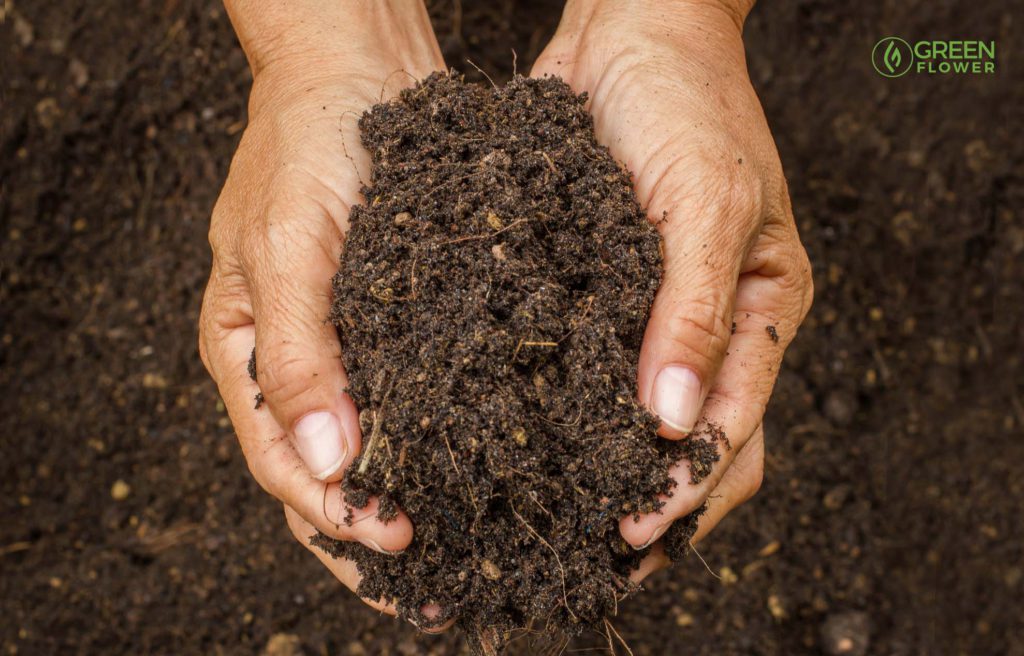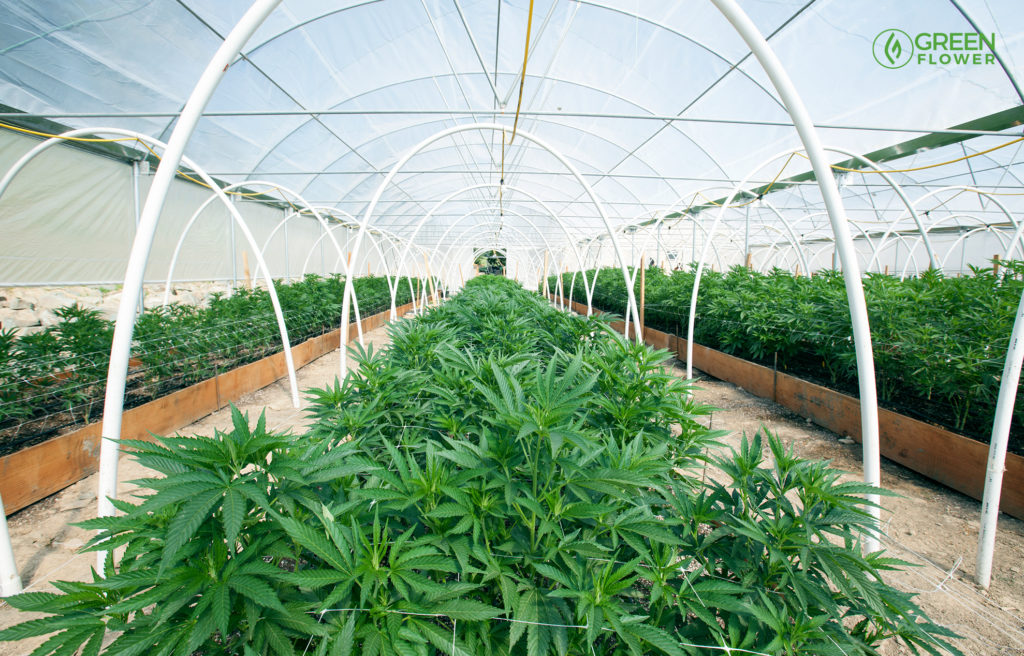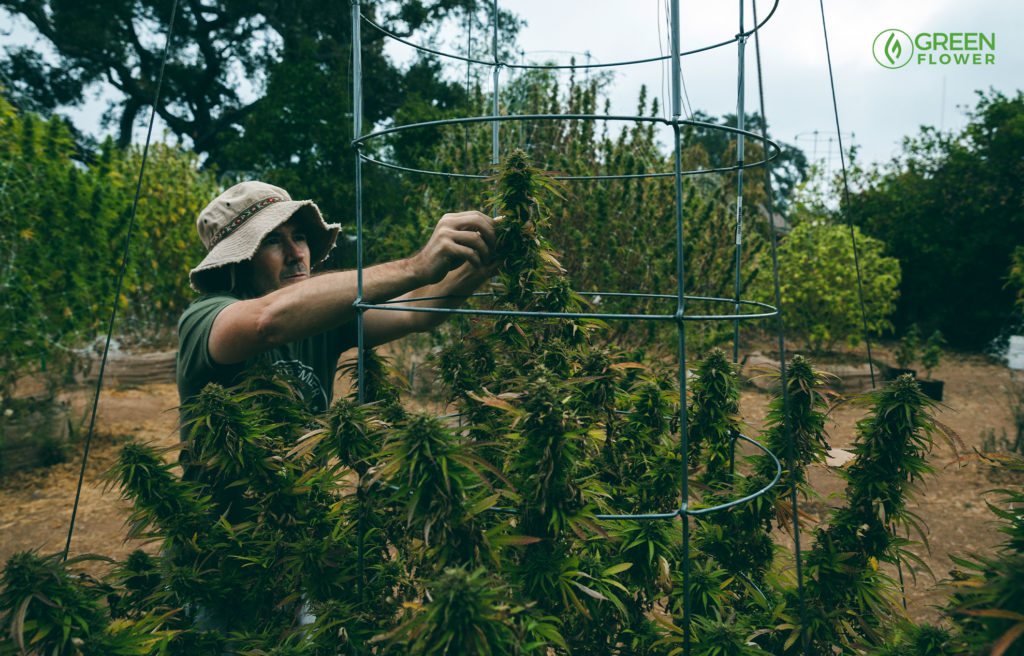The cannabis plant has been growing outdoors across the planet for many centuries. Obviously, cannabis grows in nature better in some parts of the world better than others, which is why you see amazing cannabis growing naturally in Jamaica but not in Antarctica.
Growing marijuana outdoors has many advantages compared to cultivating marijuana plants indoors, not the least of which is the lack of need for artificial lighting. With that being said, there are also some additional factors and hurdles that need to be considered and strategies developed to help mitigate any issues for outdoor plants.
At the most basic level, cultivating cannabis in a backyard is very similar to other types of gardening activities. If you can successfully cultivate tomatoes, then you will likely be able to cultivate cannabis to some extent. However, that’s not to say that cannabis is easy to grow, at least not in a way that results in a desirable harvest.
Many novice outdoor growers make the mistake of assuming that ‘cannabis grows like a weed’ — all that someone needs to do is put a cannabis seed in the ground and eventually they will be flush with world-class dried cannabis flower. That is simply not the case.
The cannabis plant is very dynamic and has particular needs. Successfully growing cannabis outdoors requires knowledge, attention to detail, and a heavy dose of hard work. But it also requires various items to get an outdoor garden started. Those items are discussed below.

Containers
Many rookie outdoor cannabis cultivators make the mistake of planting directly into the soil in their yard. It takes more than just dirt for a cannabis plant to thrive, which is why planting into a container is a much better option.
For starters, the grower gets to decide what goes into the soil. It’s very tough to know exactly what’s in the soil in someone’s yard or garden area, especially the contents below the topsoil. A yard’s soil could contain all types of materials that might be harmful to cannabis plants.
Also, containers can be moved as needed, which is necessary to do from time to time. They are also easier when it comes to monitoring moisture. Fiber pots are recommended because they allow the root base to ‘breath’ better compared to plastic pots. The plants will be grown under the sun, so the bigger the container, the better.
Plastic containers will work too, although they tend to get hotter in the sun compared to fiber pots. Raised garden beds are a really good option for plants that have matured. Prior to putting the plants in the raised bed, it is good to have them in a container for a few weeks to establish a strong root base.

Soil
The type of soil used for an outdoor cannabis garden is paramount, which is a point that Green Flower has touted many times over the years for good reason. If there is one area of the overall garden strategy to avoid cutting corners, whether it involves monetary cost or personal time, it’s the soil. Quality soil will not only help the cannabis plant reach its full potential, but it will also reduce the amount of nutrients that need to be provided to the soil later in the plant’s growth cycle, especially during the flower cycle.
Give strong consideration to creating a ‘super soil’ for use in your garden. The term ‘super soil’ was first coined by legendary cannabis cultivator Subcool. Sadly, Subcool has passed away since first blessing the cultivation community with his soil recipe. He may be gone, yet his legacy will endure forever via his popular recipe.
To learn more about the benefits of super soil check out this What Is Super Soil? guide to the topic. Below is the list of ingredients to make super soil:
- 8 large bags of a high-quality organic potting soil with coco fiber and mycorrhizae
- 25 to 50 lbs of organic worm castings
- 5 lbs steamed bone meal
- 5 lbs Bloom bat guano
- 5 lbs blood meal
- 3 lbs rock phosphate
- ¾ cup Epsom salts
- ½ cup sweet lime (dolomite)
- ½ cup azomite (trace elements)
- 2 tbsp powdered humic acid
If you cannot afford or acquire all of those ingredients, it’s not the end of the world. Include as many as possible, and mix them together. For the best results, place the ingredients on a tarp and mix them around, adding water, then store the “end product” in garbage cans for 6-12 weeks prior to use.
The amount of water needed will depend on how many ingredients you included and how hot the temperature is where you live. Ultimately, you want the soil mix to be moist throughout, yet not saturated, prior to storing. If there are pockets of dry soil then you did not add enough water. Conversely, if you can see standing water or the soil doesn’t ‘clump’ together because it is too much like a mud soup you will want to let some water evaporate prior to storing the mixture.
It’s a lot of upfront cost and effort, however, you shouldn’t have to use any other inputs over the course of the growth cycle. Do not plant a seed or clone directly into super soil. Start with just organic soil, and then transplant into super soil after the root base is strong.
If preparing super soil is too daunting of a task, using a quality organic soil will work, although you will have to use nutrients during the vegetative and flowering stages to supplement the ingredients of the organic soil. Again, keep in mind that the soil used for growing cannabis outdoors is arguably the most important component to an outdoor garden strategy.

Greenhouse
If you can afford it, incorporating a greenhouse into your outdoor garden strategy is a great idea. It doesn’t have to be the fanciest greenhouse in order to help. It can be something that is made from scratch using PVC pipe and clear sheets of plastic. Think of it as building a fort for your garden. For those who can afford it and don’t wish to make their own greenhouse, most home and garden stores carry various sizes of greenhouses.
At the very least, a greenhouse will help protect the female plants from being knocked over by gusts of wind and/or prevent rain from getting on the plants, which is an especially big concern after the summer solstice has passed and the weather begins to change. At the most, a quality greenhouse can help provide more control over temperature and humidity. A greenhouse can also help with security concerns to some extent, keeping roaming animals out of the garden.
Genetics
When it comes to cannabis genetics, outdoor gardens are better from a strain selection standpoint compared to indoor grows. Because indoor gardens are typically located in smaller spaces, most cultivators choose indica strains that tend to be shorter. Obviously, with most outdoor gardens height is not an issue and plants can get as tall as they need to be, so sativa strains can be used.
Some strains prefer the sun-grown experience much more than a life under artificial light, and have typical growth cycles that ensure that the plants will be ready to harvest by the end of the outdoor grow season (May to October in most areas). In areas that are farther north from a latitude perspective as measured by the equator, cultivators will want to stick with strains that are ready to harvest quickly because the grow season will be shorter.
We recommend that cultivators perform extensive research on the strains that are available in their area. Some jurisdictions have more robust strain offerings compared to other jurisdictions. For some cultivators, you will only be able to choose from a handful of strains. Go with the best that you can find, using other cultivators’ experiences with the strain as a guide when applicable. If someone else has successfully cultivated a particular genetic in your area, then chances are you can too!

Bracing
Proper bracing of cannabis plants is particularly important for outdoor cannabis cultivation because the plants get so large — especially when growing bigger buds outdoors. For plants that are not going to be cultivated in a greenhouse, that’s especially true because gusts of wind that can easily knock over a cannabis plant, which often proves to be a disastrous event when it occurs.
A standard tomato plant cage goes a long way for bracing cannabis plants. They are affordable and can be found at any home and garden store. Incorporating large bamboo stakes is another good option, as are wooden stakes. For really large plants, using wire fencing is a solid option.
Light Deprivation
In recent years outdoor cannabis growers have incorporated ‘light deprivation’ techniques into their gardens. Light deprivation involves limiting the amount of sun exposure a cannabis plant receives in order to force it into flowering earlier in the grow season.
Light deprivation can be done by simply bringing cannabis plants inside after they have been in the sun for 12 hours, or if you have a greenhouse, placing a dark sheet of plastic or other covering over the greenhouse after 12 hours of exposure to sunlight.
Ultimately, the goal is to prevent the plants from receiving light after being in the sun for 12 hours and keeping them in the dark for 12 hours. Light deprivation will help the plants mature faster and speed up the harvest, which is particularly desirable in areas where the grow season is shorter.
Water & Nutrients
Water is a very important component for outdoor cannabis cultivation. At first, when a cannabis plant is small, it does not require much water. However, as the cannabis plant grows and approaches harvest, it can require multiple gallons of water every day, especially on summer days when the temperature is really hot. Using a moisture meter device, which can be found at virtually every garden supply store, is a great idea to let you know when you need to water your plants.
Make sure that your water has a pH level that is as close to 7 as possible. The pH level of many water sources varies by area, even within the same city or county. Always check your pH level prior to watering, and adjust the pH as needed using products that are available in your area.
If you are using a quality super soil, you shouldn’t have to use nutrients. However, if you are not using super soil you will need to use nutrients to feed your cannabis plants. As with indoor cannabis plants, not all nutrient lines are created equal, and more expensive does not necessarily equate to higher quality. Your best bet is to find someone who has already used a nutrient line that they like and copy their feeding strategy. Over time as you become more familiar with your garden’s needs, you can adjust your nutrient strategy accordingly.

Bugs & Disease
Growing cannabis outdoors will inevitably attract bugs and pests. Aphids are a particularly common nuisance when it comes to growing cannabis outdoors. You will want to be proactive and check your plants every day. At the first sign of aphids or other bugs you will want to spray them with soapy water (5 tablespoons of dish soap per 1 gallon of water). You will want to make sure to spray both sides of the leaves to the point that the soapy water is dripping off of the leaves.
If that doesn’t work, you may want to consider using something stronger, but only prior to the plants showing signs of flowering. Once a plant is in flower, it will not generate new leaves, and whatever is sprayed on the plants will later be consumed along with the harvested cannabis, so always keep that in mind.
The same is true when it comes to disease. Bud rot and powdery mildew are likely the most common forms of cannabis plant disease when it comes to cultivating cannabis outdoors. Just as with preventing and controlling bug infestations, be proactive when it comes to disease. If you live where rain is common, powdery mildew and mold will also be common, so take steps ahead of time via the use of neem oil or fish oil to help keep diseases away.
Continuing Your Education
Growing cannabis outdoors is a never-ending educational journey. Even the most experienced cannabis cultivators will be quick to tell you how they are always learning and seeking out cultivation information.
A great way to learn more about the cannabis cultivation process from seed to harvest is via Green Flower’s Cannabis Cultivation Certificate Program. The program is led by true cultivation experts and involves insightful course materials. If you are looking to increase your cultivation knowledge, this is a great way to do it!

